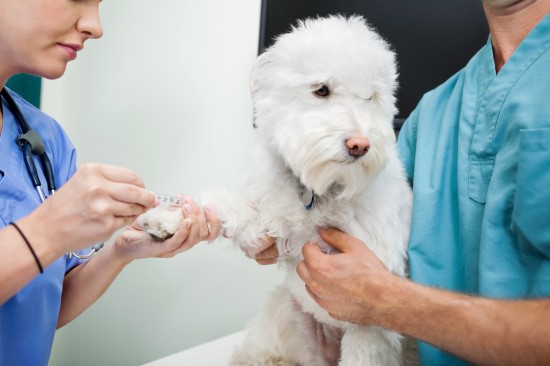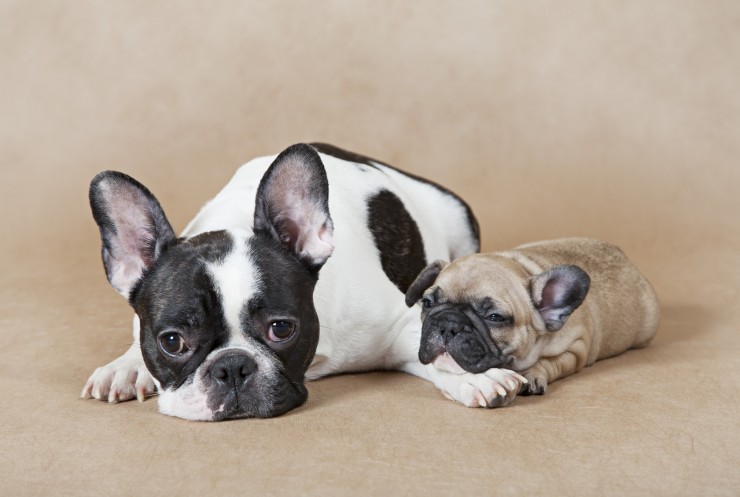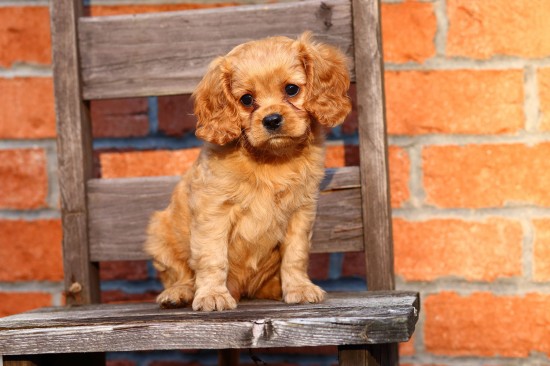
Description: The Labrador Retriever is a sturdily built, medium to large sized dog used primarily for hunting and as a companion. The dog is strongly muscled with a powerful jaw, but is renowned for its delicacy in carrying objects in its mouth. The male dog should be between 22 inches to 24 inches at the withers, with the bitch an inch less in both measurements. A top weight for the dog would be 80 pounds, and 70 pounds for the female. The Labrador coat can be yellow, chocolate, or black, and the colors must be solid. A touch of white on the chest is permitted.
Temperament: The Labrador Retriever is renowned for its equable, friendly disposition. Labradors are enthusiastic and loyal dogs and are gentle and kind with children. Despite their reputation as hunting and retrieval dogs, Labs get along well with dogs and other animals. Because Labrador Retrievers are trusting and friendly, they generally are not utilized as guard dogs. They are widely used as rescue and helper dogs, however.
History: Settlers on the isle of Newfoundland, Canada, are responsible for helping to develop the Labrador breed. The progenitor of the Labrador Retriever was the St. John's Water Dog, which also gave rise to the Newfoundland. The St. John's Water Dog was used by fishermen on the island to help bring in their nets. The St. John's Water Dog was taken to England in the 1800s, but it was not until later that the Labrador breed began to emerge on its own. This is due mostly to the fact that the Earls of Malmesbury worked to refine the breed and promote it. Because of their efforts, the Labrador Retriever won recognition as a separate breed in the late 19th century.
Health Issues: Fortunately, the Labrador Retriever is a basically healthy breed not encumbered with too many serious genetic problems. As can happen in the larger breeds, the Labrador can suffer from elbow or hip dysplasia. Knee problems might also surface and exercise induced collapse can also affect these dogs. Ear infections can occur as the soft, pendulous ears restrict air flow and help to create an environment suitable for bacterial growth. The ears should be checked and cleaned regularly to help prevent infections.
Grooming: Although the Labrador Retriever is a short-haired dog, there are shedding and coat concerns that should be addressed. The yellow dogs have a tendency to shed continuously, and need to be brushed frequently, at least several times a week. The black Labs lose most of their coat twice a year, but do not shed much otherwise. The chocolate dogs shed heavily during the summer. Both the black and chocolate varieties should be brushed once a week to remove dead hairs and spread the coat's oil evenly. Although there are many different types of grooming tool available, the most the average owner will need is just a good, basic brush.
Living Conditions: Since the Labrador Retriever is basically an outdoor hunting dog, it is capable of living outside as long as it has a snug doghouse. But, as with most hunting dogs, the Labrador is a human-orientated dog and is much happier when allowed to live in the house with the family. These dogs enjoy interacting with their human friends and keeping them inside will only reinforce their attachment to their owners.
For more information about the Labrador Retriever Dog Breed including training and Puppies for sale visit the sites below. PUPPIES OR DOGS LABRADOR RETRIEVER DOG BREED PROFILE
 Does Your Child Behave Appropriately Towards Your Dog?
Does Your Child B
Does Your Child Behave Appropriately Towards Your Dog?
Does Your Child B
 All About Feline Parvovirus
All About Feline
All About Feline Parvovirus
All About Feline
 Have You Thought About Your Dog Donating Blood?
Have You Thought
Have You Thought About Your Dog Donating Blood?
Have You Thought
 The Challenges Of Mating And Labour In The French Bulldog
The Challenges Of
The Challenges Of Mating And Labour In The French Bulldog
The Challenges Of
 Cavapoo Genetic Diversity And Hereditary Health
Cavapoo Genetic D
Cavapoo Genetic Diversity And Hereditary Health
Cavapoo Genetic D
Copyright © 2005-2016 Pet Information All Rights Reserved
Contact us: www162date@outlook.com